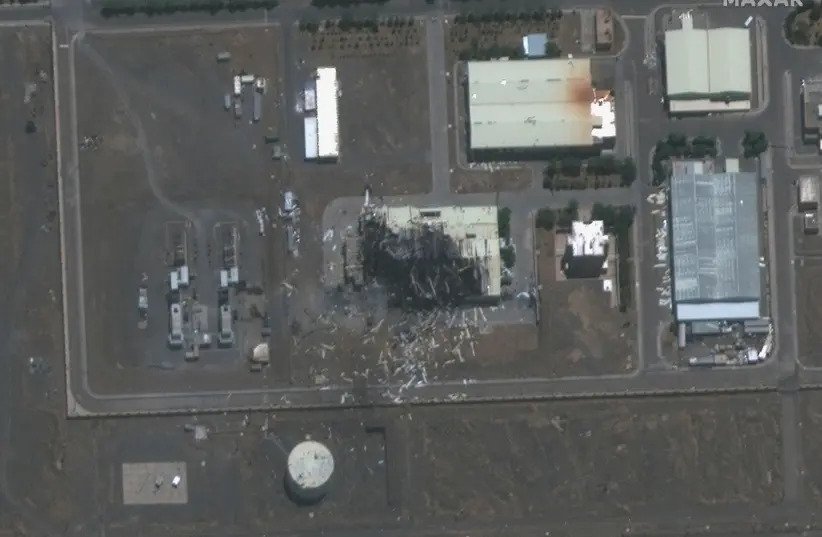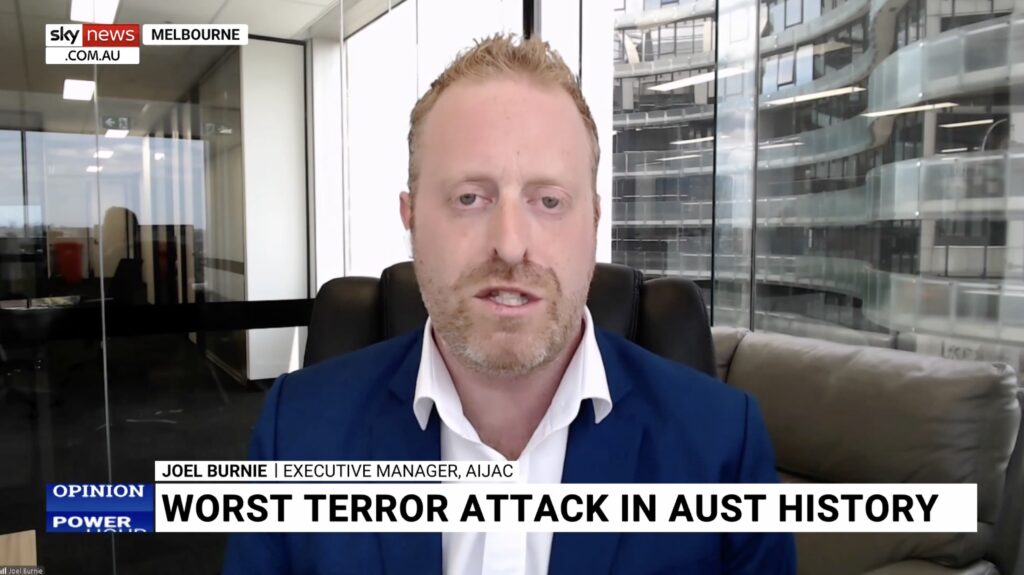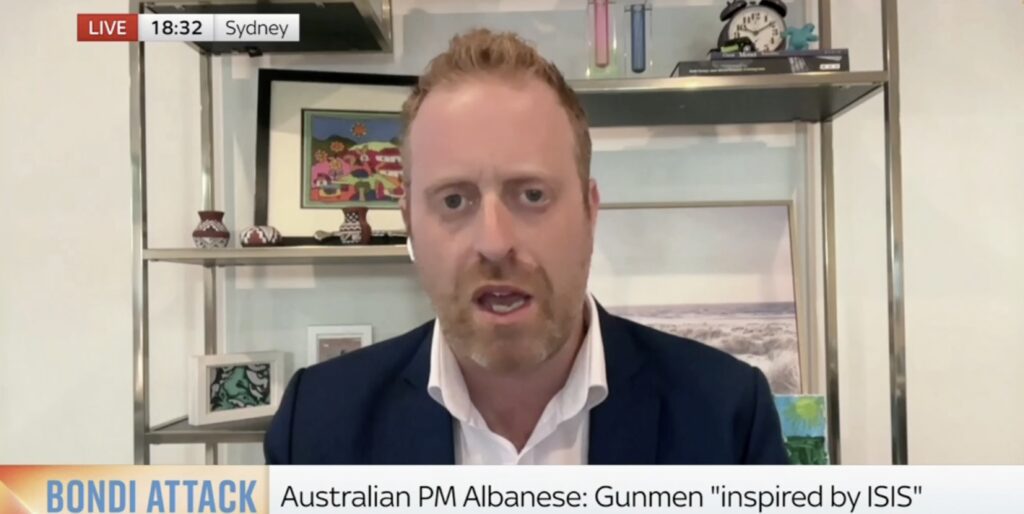UPDATES
Mysterious explosions in Iran
July 10, 2020 | AIJAC staff

Update from AIJAC
07/20 #01
This Update deals with the significance of a series of explosions in Iran over recent weeks, which seem to be hitting targets associated with Iran’s nuclear and missile programs. The most well-known of these explosions struck an advanced uranium centrifuge assembly facility at Iran’s main uranium enrichment plant at Natanz on July 2 – but there have been a number of others, including one early this morning in Teheran.
We lead with a summary of what is known about the Natanz and other explosions, as well as the background to these events, from BICOM, the Britain Israel Communications and Research Centre. The report notes a claim by an unnamed “Middle Eastern intelligence official with knowledge of the episode” that Israel was responsible for the explosion in Natanz but not the others. The story also reports on Iran’s threats to retaliate and increasing pressure on Iran from the International Atomic Energy Agency to return to compliance with the 2015 JCPOA nuclear deal. For all the essential background on the issue of the explosions in Iran, CLICK HERE.
Next up, David Albright, a nuclear physicist and former UN weapons inspector, summarises the interpretation of the Natanz blast reached by the organisation he heads, the Institute for Science and International Security. He says the damage to the centrifuge assembly plant was much larger than previously admitted, likely irreparable, and will constitute a very significant setback to Iran’s nuclear program given its importance to the program. For all the details, CLICK HERE.
Finally, we offer some analysis from Washington Insitute for Near East Policy expert Simon Henderson. He provides some additional technical background on what the centrifuge assembly plant was doing, how centrifuges work, and the extent of the setback to Iran’s nuclear program. In addition, he discusses the possibility that Iran will seek to respond against Israel if it believes Israel responsible – and whether this response might be an extreme one such as targeting Israel’s nuclear research facility at Dimona. For Henderson’s complete exploration of these issues, CLICK HERE. (Henderson, who visited Australia as a guest of AIJAC in 2016, will be the guest at an upcoming AIJAC webinar on Tuesday, July 21. More details to follow.)
Readers may also be interested in…
- A Jerusalem Post editorial on what the multiple attacks on Iran by an unseen adversary might mean for the regime.
- Iran is currently suffering its highest levels of coronavirus deaths so far. Zvi Bar’el of Haaretz suggests that the regime may be too focussed on coronavirus and severe economic problems to retaliate for the recent explosions.
- Iran has just signed a 25-year strategic partnership deal with China, but the regime has had to deny rumours it offered China a naval base in the Persian Gulf.
- A report that in Lebanon, Hezbollah is using its state-funded medical arm only to help Shi’ites.
- Iraqi politics expert Amatzia Baram explains why new Iraqi Prime Minister Mustafa al-Kadhimi is good news for the US and the Middle East.
- Al-Kadhimi recently released 14 pro-Iran militia members he had detained. Yoni Ben Menachem of the Jerusalem Centre for Public Affairs says the capitulation was a victory for Iran and a big political mistake by the PM.
- Washington Institute Senior Fellow Michael Knights discusses the assassination in Iraq of prolific security commentator Husham al-Hashemi, whose death, Knights believes, was at the hands of the Iranian supported militias he criticised.
- American Enterprise Institute Senior Fellow Danielle Pletka, AIJAC’s guest at our July 14 webinar, explains how the US should thwart the activities of rogue states such as China, Iran and Russia, without resorting to war.
- Khaled Abu Toameh reveals that, after a young Gaza dissident took his life after ongoing harassment from Hamas, the fourth suicide in Gaza that week, several of those who attended his funeral or visited his family to offer condolences were also detained by the terror group.
- Orna Mizrahi and Yoram Schweitzer of Israel’s Institute for National Security Studies examine the intensifying domestic and international challenges confronting Hezbollah, and how it might deal with them.
- Some examples from the many stories and comments now appearing at AIJAC’s daily “Fresh AIR” blog:
- Ahron Shapiro in today’s Daily Telegraph on how a so-called Israeli “annexation” in the West Bank might provide Palestinians with an opportunity. Earlier, in the Australian Jewish News, he argued there is no need for Jews to choose between fighting the racial injustice addressed by the Black Lives Matter movement and supporting Israel.
- Jack Gross on the coronavirus “second waves” in both Australia and Israel, and what the two countries can learn from each others’ experiences. Earlier, Jack wrote about new signs the Palestinians may be considering returning to direct negotiations with Israel in the wake of the US Trump Administration peace plan.
- Judy Maynard on new evidence that the Al Jazeera news organisation is controlled by the Muslim Brotherhood and effectively proselytises for it, plus a debunking of some deceitful maps of “disappearing Palestine.”
- Video of AIJAC’s latest webinar with Israeli analyst and author Dr. Jonathan Spyer, on the “Meltdowns and Mayhem” in the Middle East. A written report on Spyer’s comments is available at J-wire, while a short video excerpt of the webinar addresses what Australia can do to help stablise the chaotic situation in the Middle East.
Iran admits to significant damage at nuclear site
BICOM News Update
 Image composite prepared by the Institute for Science and International Security which compares the image of the damage to the centrifuge assembly building at Natanz released by the Atomic Energy Organization of Iran (top) with before and after satellite imagery (bottom) which appears to prove the Iranian photo concealed most of the damage.
Image composite prepared by the Institute for Science and International Security which compares the image of the damage to the centrifuge assembly building at Natanz released by the Atomic Energy Organization of Iran (top) with before and after satellite imagery (bottom) which appears to prove the Iranian photo concealed most of the damage.
What happened: Iran has admitted that the nuclear site in Natanz suffered “significant damage” as a result of an explosion last Thursday.
- Iran initially downplayed the damage, but Iran’s atomic agency spokesman Behrouz Kamalvandi confirmed yesterday that “there were no casualties as a result of the incident, but significant financial damages were incurred … there were advanced equipment and precision measurement devices at this site that were either destroyed or damaged.”
- He also confirmed that the damaged building was a centrifuge assembly centre and not an “industrial shed,” as earlier claimed. “More advanced centrifuge machines were intended to be built there,” he said, adding that the damage would “possibly cause a delay in development and production of advanced centrifuge machines in the medium term.”
- According to the New York Times “a Middle Eastern intelligence official with knowledge of the episode said Israel was responsible for the attack … using a powerful bomb. A member of the Islamic Revolutionary Guards Corps (IRGC) who was briefed on the matter also said an explosive was used … they do not yet know how or when the explosives were sneaked in, but the attack clearly demonstrated a hole in the facility’s security. The episode will probably accelerate plans to move more of Iran’s most sensitive facilities underground.”
- Alternate Prime Minister and Defence Minister Benny Gantz was asked about the strike in an interview yesterday where he replied: “Everyone can suspect us in everything and all the time, but I don’t think that’s correct. Not every event that happens in Iran is necessarily related to us.”
- On Saturday a Foreign Office spokesperson related to the Iranian nuclear deal, saying: “The UK remains committed to JCPOA, but it is being put at risk by systematic Iranian non-compliance. If Iran wishes to benefit from the JCPOA, it must engage constructively with the Dispute Resolution Mechanism (DRM) process initiated by the E3, and implement its commitments under the deal.”
- Also yesterday, the head of the IRGC Navy revealed, “Iran has established underground onshore and offshore missile cities all along the coasts of the Persian Gulf and the Gulf of Oman that would be a nightmare for Iran’s enemies.”
 An unidentified International Atomic Energy Agency inspector at the Natanz facility, south of Tehran, January 20, 2014 (Credit: ASSOCIATED PRESS).
An unidentified International Atomic Energy Agency inspector at the Natanz facility, south of Tehran, January 20, 2014 (Credit: ASSOCIATED PRESS).
Context: According to Kamalvandi, a month after the US withdrew from the nuclear agreement in 2018, Iran began work on developing advanced centrifuges in Natanz following an order from Supreme Leader Ayatollah Ali Khamenei. Iran is using high-speed centrifuges to enrich uranium. Highly enriched uranium can be fuel for an atomic bomb.
- In June the International Atomic Energy Agency (IAEA) accused Iran of continuing to increase its stockpiles of enriched uranium, in violation of the nuclear deal.
- According to Israel Hayom’s security analyst Yoav Limor, “If the assumption that this was an act of deliberate sabotage is correct, it qualifies as a great success for whoever perpetrated the attack: the intelligence that was gathered about the secret facility; the familiarity with what was in it and what was operating there; and the placing of the bomb in a strategic location to cause maximum damage to the sensitive equipment. The surprised and hesitant reactions out of Iran are a testament not only to their astonishment that the secret facility had been exposed and targeted, but also as to their uncertainty as to who committed the attack and how.”
- There have been a series of other explosions inside Iran in the past 10 days. On Saturday, there was an explosion at power plant in Ahvaz. On June 26, an explosion occurred east of Tehran near the Parchin military base where Iran develops ballistic missiles. Iranian authorities claimed it was caused by a leak in a gas storage facility in an area outside the base.
- Natanz was also targeted in 2010 by the Stuxnet computer virus. Stuxnet was jointly developed by IDF Intelligence and the National Security Agency in the US. It damaged the control over the centrifuges and caused them to break down without leaving any trace, and it operated for close to a year before it was discovered.
- The explosion at Natanz occurred in a building that housed centrifuges which are far more advanced than the centrifuges that were damaged a decade ago.
- In 2018 Israel’s intelligence broke into a warehouse in Tehran and took half a ton of secret documents relating to Iran’s nuclear project.
Looking ahead: There is heightened concerns that Iran will try and retaliate against Israel. One option could be via Syria, either directly by the IRGC or through their proxy militias. In the last two years they have tried and failed to strike at Israel several times with rockets and UAVs.
- The UN backed arms embargo on Iran expires on 18 October. The US is hoping to renew the UN Security Council ban on selling conventional arms to Iran.
Three-quarters of Natanz centrifuge assembly hall destroyed – nuke experts
Security expert David Albright told the ‘Post’ that some of the damage is likely irreparable.
By YONAH JEREMY BOB
Jerusalem Post, JULY 9, 2020 18:38
 Satellite image from Planet Labs Inc. annotated by experts shows a damaged building after a fire and explosion at Iran’s Natanz nuclear site, July 3, 2020, within the context of the wider Natanz compound. (Credit: Planet Labs Inc., James Martin Center for Nonproliferation Studies at Middlebury Institute of International Studies via AP
Satellite image from Planet Labs Inc. annotated by experts shows a damaged building after a fire and explosion at Iran’s Natanz nuclear site, July 3, 2020, within the context of the wider Natanz compound. (Credit: Planet Labs Inc., James Martin Center for Nonproliferation Studies at Middlebury Institute of International Studies via AP
Nearly three-quarters of Iran’s main centrifuge assembly hall was destroyed by the recent explosion there, Institute for Science and International Security (ISIS) president David Albright told The Jerusalem Post.
Albright indicated that this latest revelation is based on two new satellite overviews showing a much fuller picture than footage that was released last weekend, indicating that the vast majority of the centrifuge assembly hall was wiped out.
This could mean there will be increased delay to Iran’s nuclear program, since it will have to recover from the incident.
“It is clear that a major explosion took place, destroying nearly three-quarters of the main centrifuge assembly hall, generating a fire that blackened a major portion of the building, the blackening visible where the roof had been blown away by the explosion,” Albright said.
According to the latest report by the think tank, “High-resolution commercial satellite imagery… shows that the Iran Centrifuge Assembly Center (ICAC) at the Natanz Enrichment Site has suffered significant, extensive, and likely irreparable damage to its main assembly hall section.”
Further, the report says, “This new facility, inaugurated in 2018, was critical to the mass production of advanced centrifuges, in particular the assembly of rotor assemblies, the rapidly spinning part of the centrifuge and its most crucial component.”
In terms of rolling back Tehran’s future nuclear program plans, the report adds, “An annex to the building was intended to assemble electrical components of centrifuges, including motors – another important component of centrifuges.”
Albright said that his institute’s findings are confirmed by Iran’s shifting story.
“While early reporting from Iran suggested that a fire was ‘limited’ and restricted to a ‘shed under construction,’” he said, “more recent Iranian admissions are stating that the damage was ‘significant.’”
The report said that “the visible damage is such that the entire building will likely have to be razed and rebuilt from scratch.”
It added that, “Advanced centrifuge rotor assemblies are typically assembled in ‘clean rooms,’ an expensive-to-build environment free from dust and other contaminants,” and a 2018 video showed what appear to be clean rooms at the facility in question.
Other destroyed items which could be hard to replace could include: “balancing machines, specialized rotor assembly equipment, measuring equipment and centrifuge test stands.”
 Institute for Science and International Security (ISIS) president Dr. David Albright, a nuclear physicist and former UN weapons Inspector.
Institute for Science and International Security (ISIS) president Dr. David Albright, a nuclear physicist and former UN weapons Inspector.
Albright estimated that the facility would take at least a year to rebuild, but likely longer since it took six years, from 2012-2018, to build it and become operational the first time.
Although the explosion will not prevent Iran from performing advanced centrifuge research at other locations, Albright said that only the Natanz facility had the potential capability to mass-produce advanced centrifuges in the thousands.
Most importantly, it is a major setback for moving forward with the IR-4, the only advanced centrifuge which has been expected to show more immediate promise.
Iran has a variety of other advanced centrifuges that it shows off for public relations, but which have failed completely or are still far from fully operational.
The Natanz explosion is considered the most significant of six explosions that have occurred in Iran since late June, shaking the regime’s confidence.
To date, Tehran has not responded and it is unclear if it has a solid lead on who caused the explosions, or if some of the explosions may have been caused by outdated infrastructure.
The explosions come 14 months after Iran started to violate the 2015 nuclear deal’s limits, with estimates that it is four to six months from being able to produce a nuclear bomb.
Will Iran ‘go nuclear’ over its latest nuke site setback?
The Hill, July 6, 2020
 Don’t expect the truth about what happened from Iranian leaders like President Hassan Rouhani.
Don’t expect the truth about what happened from Iranian leaders like President Hassan Rouhani.
It looks as though a “nuclear war” of sorts has started in the Middle East. Iran’s centrifuge assembly plant at its main enrichment site of Natanz was destroyed last week, possibly with a bomb, according to some reports. What exactly occurred is the subject of much speculation. Iranian officials have said they know what happened but will announce it “later.”
Don’t expect the truth. The first Iranian report of the incident included a photograph that suggested just one corner of the building was damaged, and a few doors blown open. A satellite image of the facility was published Sunday indicating it was largely destroyed. The original photograph had been taken from the one angle that cast doubt on such an interpretation.
Many people believe that Israel is responsible for whatever happened, as well as a series of recent other unexplained happenings in Iran — an explosion at a Tehran clinic, a blast at a missile research facility, and a fire at a power plant. Israeli Defense Minister Benny Gantz commented Sunday that Israel wasn’t “necessarily” behind every mysterious incident in Iran. Intended or not, in Washington parlance, that is a non-denial denial.
Although the Natanz enrichment plant itself was an obvious target, the fact that it is buried deep under a concrete and enmeshed steel roof makes it impenetrable to most bombs other than American bunker busters, or a nuclear bomb itself. Israel’s probable fear is that Iran is restarting production of its IR-2m centrifuges.
Currently Iran relies on IR-1 types, which for design reasons cannot enrich uranium to the level needed for an atomic bomb. Iran’s existing stockpile of the more capable IR-2m centrifuges, some of which it was allowed to retain after the 2015 Joint Comprehensive Plan of Action (JCPOA), have been poorly stored and are probably unusable.
The assumption is that Iran has restarted large-scale production of the IR-2m centrifuges — or at least it had until last week. A centrifuge can be likened to a top-loading washing-machine, except it is taller (several feet) and has a smaller diameter (perhaps a foot or less). A single centrifuge is made up of a basic spinning vertical cylinder — the rotor — plus perhaps 200 smaller bits. A top-loading washing machine makes awful noises if the laundry is badly loaded. An enrichment centrifuge rotor, spinning at 60,000 rpm, can be unbalanced by a fingerprint.
The heavily damaged centrifuge assembly plant at Natanz no longer can be used for assembly of the IR-2ms. Whether it happened because of internal sabotage or a well-aimed drone attack will emerge sooner or later. But it is doubtful that Iran has an alternative facility. Therefore, production of IR-2ms has stopped and, from Israel’s point of view, the likelihood of Iran obtaining enough highly-enriched uranium for its first nuclear weapon has been delayed by months, perhaps even years.
 Iran can retaliate if it wishes – An Iranian locally made cruise missile is fired during war games in the northern Indian Ocean (photo credit: WANA NEWS AGENCY/REUTERS)
Iran can retaliate if it wishes – An Iranian locally made cruise missile is fired during war games in the northern Indian Ocean (photo credit: WANA NEWS AGENCY/REUTERS)
The story does not end there, however. How will Iran respond to this setback? And, if Israel was involved, how will the Islamic regime cope with the probable sense of public humiliation?
According to the commentators who emerge immediately in these circumstances, if Israel took action it may have been in retaliation to an Iranian cyber attack on an Israeli desalination plant a few months ago. The danger is that Tehran will think in terms of a “nuclear” response — an attack targeting an Israeli nuclear facility such as the Dimona research reactor in southern Israel.
Phlegmatically (I am, after all, originally from Britain), I could point out that Saudi Arabia preferred to directly avoid blaming Iran for its attacks on oil installations last September, and President Trump evaded the need to respond to Iranian missile attacks on U.S. facilities in Iraq after the U.S. assassination of Iranian Gen. Qassem Soleimani in January, even though the attacks thoroughly shook up the brains of multiple U.S. personnel.
Will Tehran be as restrained in its response? We are about to find out.
Simon Henderson is the Baker Fellow and director of the Bernstein Program on Gulf and Energy Policy at the Washington Institute for Near East Policy. He is the co-author of the Institute’s 2015 report, “Nuclear Iran: A Glossary.” Follow him on Twitter @shendersongulf.





